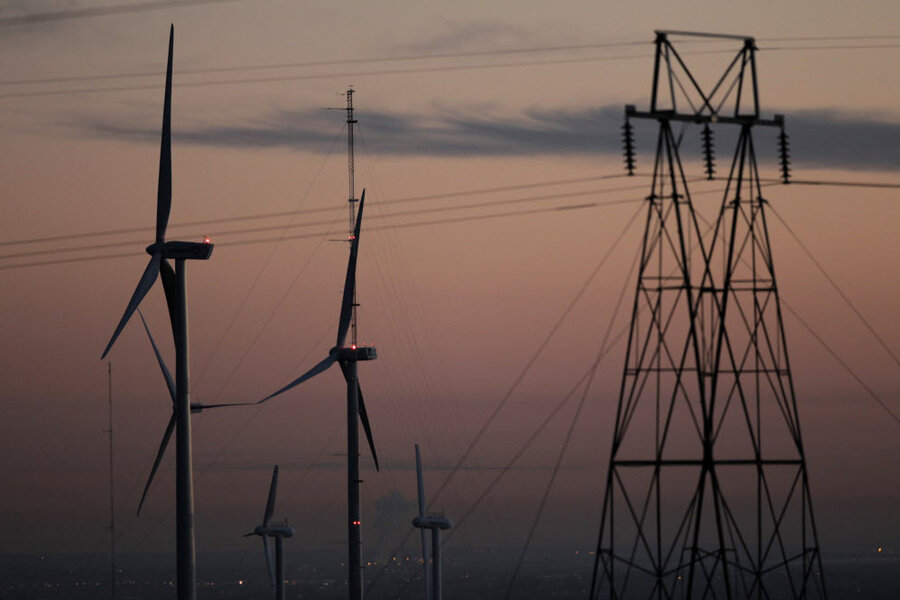US predicted to be world's largest oil producer by 2017
The United States will overtake Saudi Arabia and Russia as the world's top oil producer by 2017, the West's energy agency said on Monday, predicting Washington will come very close to achieving a previously unthinkable energy self-sufficiency.
The International Energy Agency (IEA) said it saw a continued fall in US oil imports with North America becoming a net oil exporter by around 2030 and the United States becoming almost self-sufficient in energy by 2035.
"The United States, which currently imports around 20 percent of its total energy needs, becomes all but self-sufficient in net terms - a dramatic reversal of the trend seen in most other energy importing countries," it said.
The forecasts by the IEA, which advises large industrialised nations on energy policy, were in sharp contrast to its previous reports, which saw Saudi Arabia remaining the top producer until 2035.
"Energy developments in the United States are profound and their effect will be felt well beyond North America - and the energy sector," the IEA said in the annual long-term report, giving one of the most optimistic forecasts for US energy production growth to date.
"The recent rebound in US oil and gas production, driven by upstream technologies that are unlocking light tight oil and shale gas resources, is spurring economic activity - with less expensive gas and electricity prices giving industry a competitive edge," it added.
IEA Chief Economist Fatih Birol told a news conference in London he believed the United States would overtake Russia as the biggest gas producer by a significant margin by 2015. By 2017, it would become the world's largest oil producer, he said.
This could have significant geopolitical implications, if Washington feels its strategic interests are no longer as embedded in the Middle East and other volatile oil producing regions.
Analysts ask whether an energy independent United States would still be prepared to safeguard major trade routes around the world, such as the Strait of Hormuz in the Middle East.
The United States will rely more on natural gas than either oil or coal by 2035 as cheap domestic supply boosts demand among industry and power generators, the IEA said.
LIMITED KNOWLEDGE
Birol said he realised how optimistic the IEA forecasts were given that the shale oil boom was a relatively new phenomenon.
"Light, tight oil resources are poorly known ... If no new resources are discovered (after 2020) and plus, if the prices are not as high as today, then we may see Saudi Arabia coming back and being the first producer again," he said.
The IEA said it saw US oil production rising to 10 million barrels per day (bpd) by 2015 and 11.1 million bpd in 2020 before slipping to 9.2 million bpd by 2035.
Saudi Arabian oil output would be 10.9 million bpd by 2015, the IEA said, 10.6 million bpd in 2020 but would rise to 12.3 million bpd by 2035.
That would see the world relying increasingly on OPEC after 2020 as, in addition to increases from Saudi Arabia,Iraq will account for 45 percent of the growth in global oil production to 2035 and become the second-largest exporter, overtaking Russia.
OPEC's share of world oil production will rise to 48 percent from 42 percent now.
Russian oil output, which over the past decade has been steadily above Saudi Arabia, is predicted to stay flat at over 10 million bpd until 2020, when it will start to decline to reach just above 9 million bpd by 2035.
"Russia, which remains the largest individual energy exporter throughout the period, sees its revenues from oil, natural gas and coal exports rise from $380 billion in 2011 to $410 billion in 2035," the IEA said.
The US oil boom would accelerate a switch in the direction of international oil trade, the IEA said, predicting that by 2035 almost 90 percent of oil from the Middle East would be drawn to Asia.
ENERGY DEMAND GROWS BY THIRD
The report assumes a huge expansion in the Chinese economy, which it saw overtaking the United States in purchasing power parity soon after 2015 and by 2020 using market exchange rates. Chinese real gross domestic product is expected to increase by 5.7 percent annually between 2011 and 2035.
A rise of 1.8 billion in the world's population to 8.6 billion would lead to a spike in global oil demand by more than a 10th to over 99 million bpd by 2035, keeping pressure on oil prices, the IEA said.
The agency's central "New Policies" scenario, which assumes a range of measures are taken to curb oil consumption in Europe, the United States, China and elsewhere, sees the average import cost of oil rise to just over $215 per barrel by 2035 in nominal terms, or $125 in 2011 terms.
If fewer steps are taken to promote renewable energy and curb carbon dioxide emissions, oil was likely to exceed $250 per barrel in nominal terms by 2035 and reach $145 in real terms -- almost level with the record highs seen four years ago.
The share of coal in primary energy demand will fall only slightly by 2035.
Fossil fuels in general will remain dominant in the global energy mix, supported by subsidies that, in 2011, jumped by almost 30 percent to $523 billion, due mainly to increases in the Middle East and North Africa.
Reporting by Dmitry Zhdannikov, Peg Mackey and Christopher Johnson; Writing by Dmitry Zhdannikov; Editing by Christopher Johnson and William Hardy





